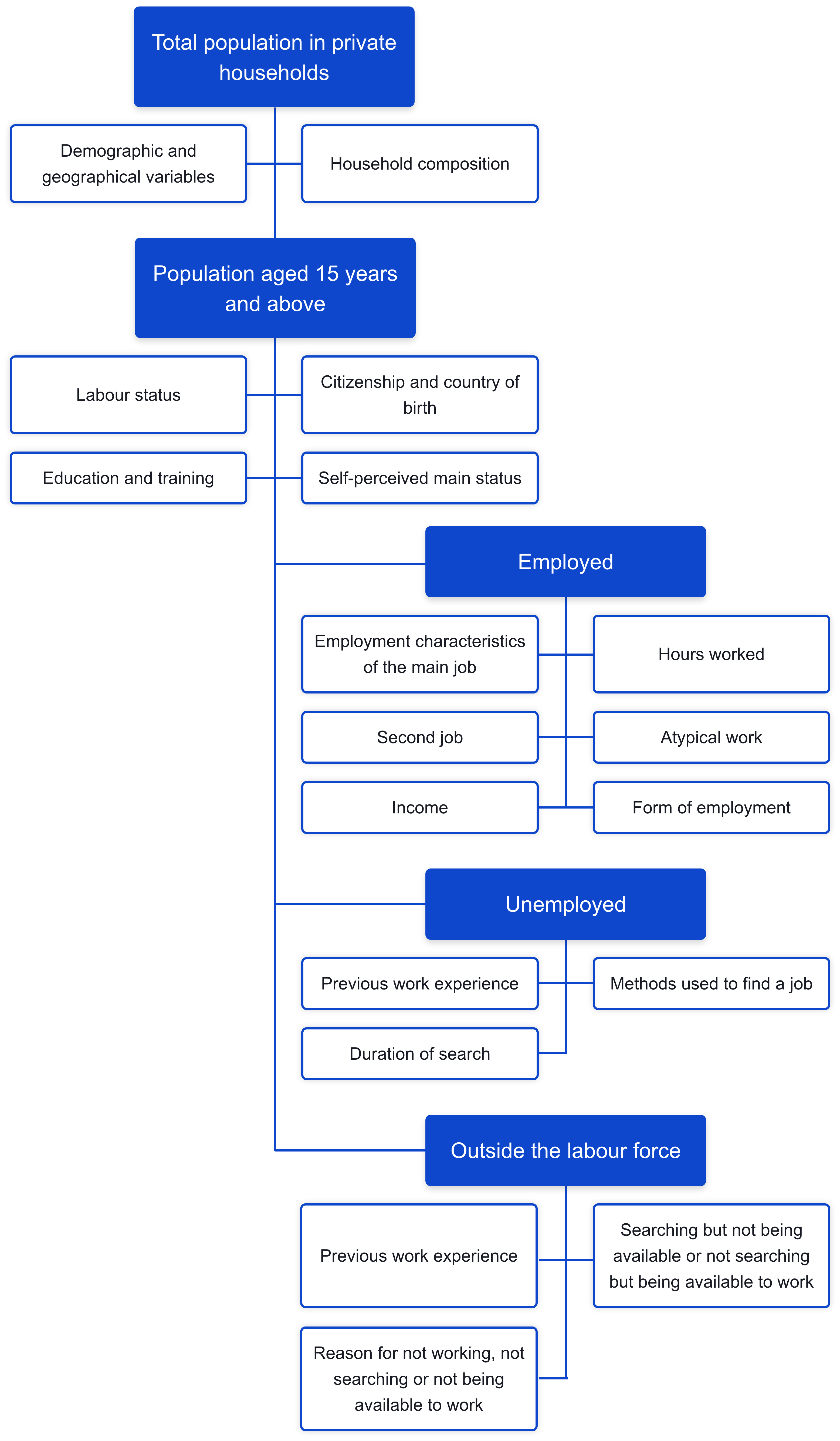Methodology
Main concepts
The main statistical objective of the EU labour force survey (EU-LFS) is to provide descriptive and explanatory data on each of the 3 groups: employed, unemployed, people outside the labour force.
While demographic data are gathered for all population age groups, questions relating to labour market status are restricted to persons in the age group 15 years or older.
Different information is collected depending on the labour status of the people, whether they are employed, unemployed, or outside the labour force.
Typology to classify the statistical information (variables)

Main definitions
Employed persons include 2 groups:
- people aged 15-89 who worked during the reference week, even for just one hour, for pay, profit or family gain
- people who did not work, but had a job or business from which they were temporarily absent during the reference week, if the reason of the absence is one of the following:
- illness
- holiday
- maternity or paternity leave
- industrial dispute
- education and training
- other reasons but keeping a strong attachment to the job
Unemployed persons are those aged 15-74 who
- were not employed during the reference week
- were available for work, and
- were either actively seeking work in the 4 weeks before the reference week or had already found a job to start within the next 3 months.
The labour force comprises employed and unemployed persons.
People outside the labour force are those classified neither as employed nor as unemployed.
Further reading
Overview of the concepts and other methodological issues:
Detailed information on the classifications, access to the explanatory notes, user guide, national questionnaires used to collect the data can be found in the article EU labour force survey – documentation.
The most important developments of the EU-LFS are described in the article EU labour force survey – development and history
Direct access to the explanatory notes, which contain detailed information on the definition of each variable:
